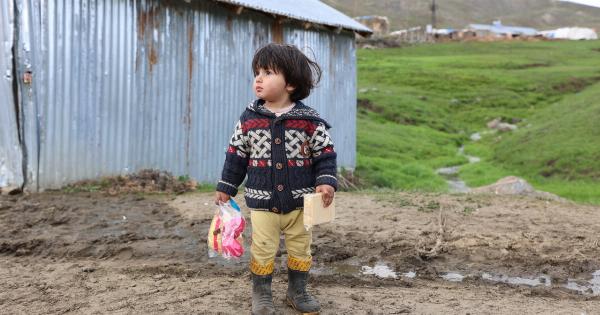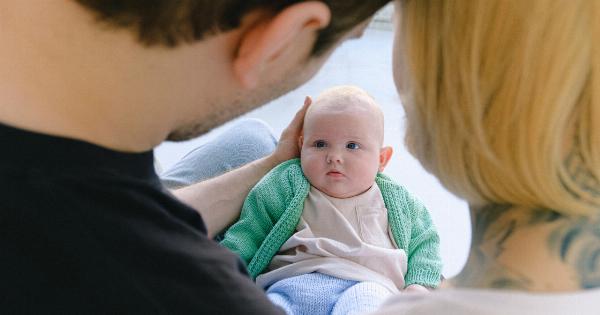A baby is delicate and vulnerable, relying on their caregivers for love, care, and protection. Unfortunately, there are instances where some individuals fail to understand the potential harm they can cause by shaking a baby.
Shaking a baby can have severe consequences, often leading to a condition known as Shaken Baby Syndrome (SBS). In this cautionary tale, we delve into the devastating consequences of shaking a baby and the importance of educating parents and caregivers about the dangers of this act.
What Is Shaken Baby Syndrome?
Shaken Baby Syndrome (SBS) refers to a severe form of child abuse that occurs when a caregiver violently shakes a baby. This act can cause traumatic brain injury and other severe complications that may have life-altering consequences for the child.
The Dangers of Shaking
Shaking a baby can have immediate and long-term consequences. When a baby is forcefully shaken, their fragile brain can move back and forth within the skull, leading to serious brain damage.
The sudden acceleration and deceleration of the brain can result in bleeding, swelling, and bruising, causing permanent damage to the baby’s developing brain.
The Immediate Consequences
Shaking a baby can result in immediate and life-threatening consequences. Some of the common signs and symptoms that may indicate a shaken baby include:.
1. Difficulty breathing or breathlessness.
2. Seizures or convulsions.
3. Lethargy or listlessness.
4. Poor feeding or vomiting.
5. Inability to focus or track objects with their eyes.
6. Extreme irritability or inconsolable crying.
7. Difficulty waking up or excessive sleepiness.
8. Impaired motor skills.
9. Unexplained bruises, fractures, or injuries.
10. Changes in eating or sleeping patterns.
Long-Term Consequences
The consequences of shaking a baby can extend far beyond the immediate physical injuries. Some long-term consequences may include:.
1. Developmental delays: Shaking a baby can result in long-term developmental delays, impairing their cognitive, motor, and social skills. These delays can have a significant impact on the child’s overall quality of life and future prospects.
2. Neurological disorders: Shaken Baby Syndrome can lead to the development of neurological disorders such as cerebral palsy, seizures, and intellectual disabilities.
These conditions can significantly affect the child’s ability to function and live independently.
3. Vision and hearing impairment: The forceful shaking can also cause damage to the baby’s sensory organs, leading to vision and hearing impairment. A baby who has been shaken may require lifelong assistance and specialized care.
4. Emotional and behavioral issues: Shaken babies may experience emotional and behavioral issues as they grow older. These may manifest as difficulty in forming attachments, aggression, anxiety, depression, and self-harm tendencies.
5. Death: In severe cases, shaking a baby can result in immediate death. The impact on the baby’s delicate brain and internal organs can be fatal, leaving devastated families in its wake.
Prevention and Education
It is crucial to prioritize prevention and education to protect babies from the devastating consequences of shaking. Here are some essential steps that can be taken:.
1. Raise awareness: Parents, caregivers, and the community at large must be made aware of the dangers associated with shaking a baby. This awareness can help prevent incidents of SBS and encourage early intervention.
2. Teaching coping strategies: Stress can sometimes overwhelm parents or caregivers, leading to the risk of shaking a baby. Providing support and teaching healthy coping strategies can help manage stressors and reduce the likelihood of harm to the child.
3. Promote safe sleep practices: Educating parents about safe sleep practices, such as putting babies to sleep on their backs in a safe crib, can help prevent situations that may contribute to frustration or anger.
4. Offer parenting programs: Parenting programs that emphasize the importance of nurturing, loving, and positive care can equip parents with the knowledge and skills necessary to handle the challenges of parenting without resorting to harmful actions.
5. Encourage open communication: Providing parents and caregivers with avenues for open communication and support can help them express their concerns, fears, and frustrations without putting their child at risk.
Conclusion
Shaking a baby may seem like a temporary solution to frustrated caregivers, but the consequences can be life-altering. By understanding the immediate and long-term effects, we can emphasize the importance of preventing shaken baby syndrome.
Education, awareness, and support play vital roles in protecting the well-being of our most vulnerable members of society. Remember, a baby’s life is precious and fragile, and it is our responsibility to ensure their safety and nurture them with love and care.






















